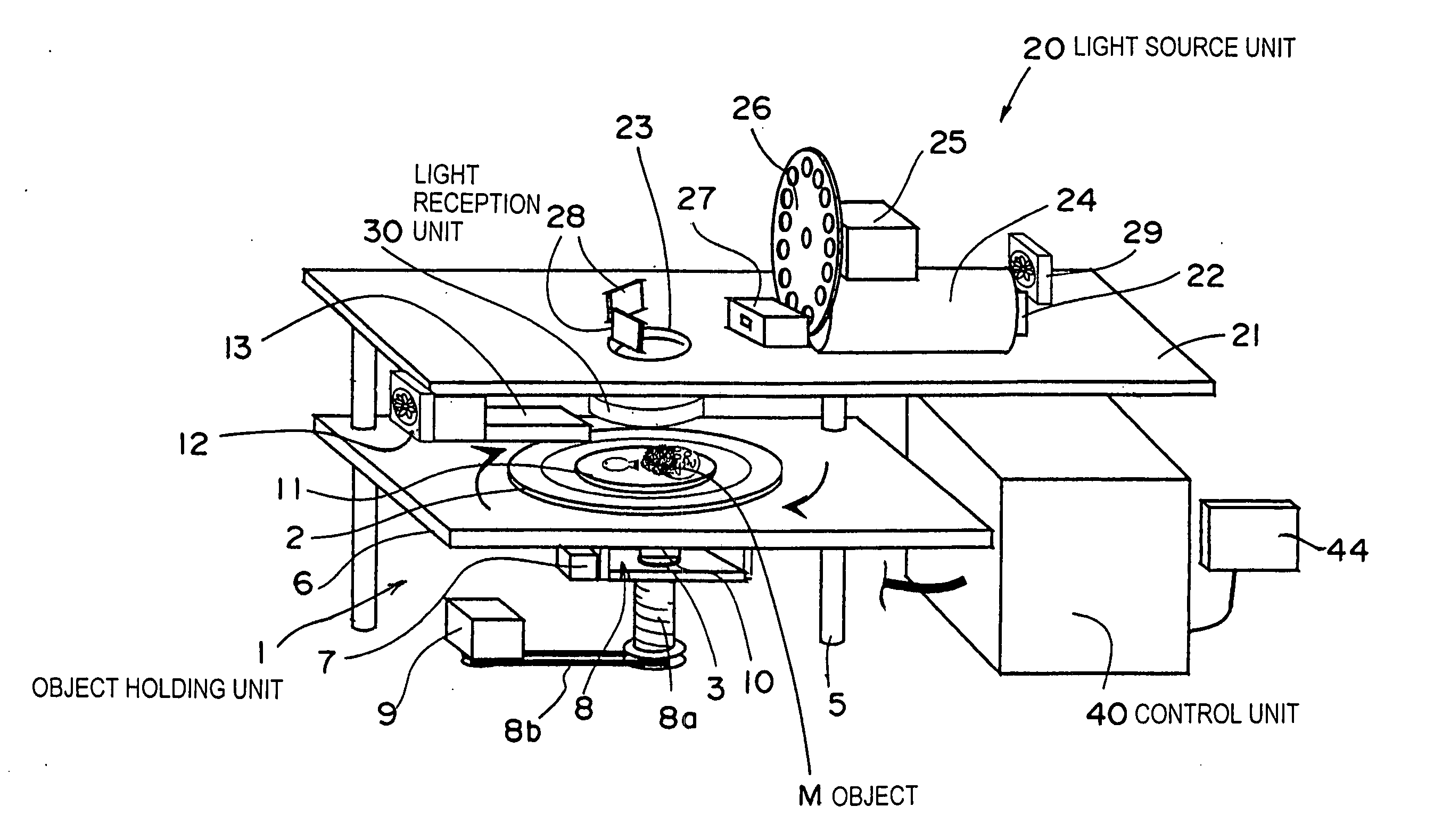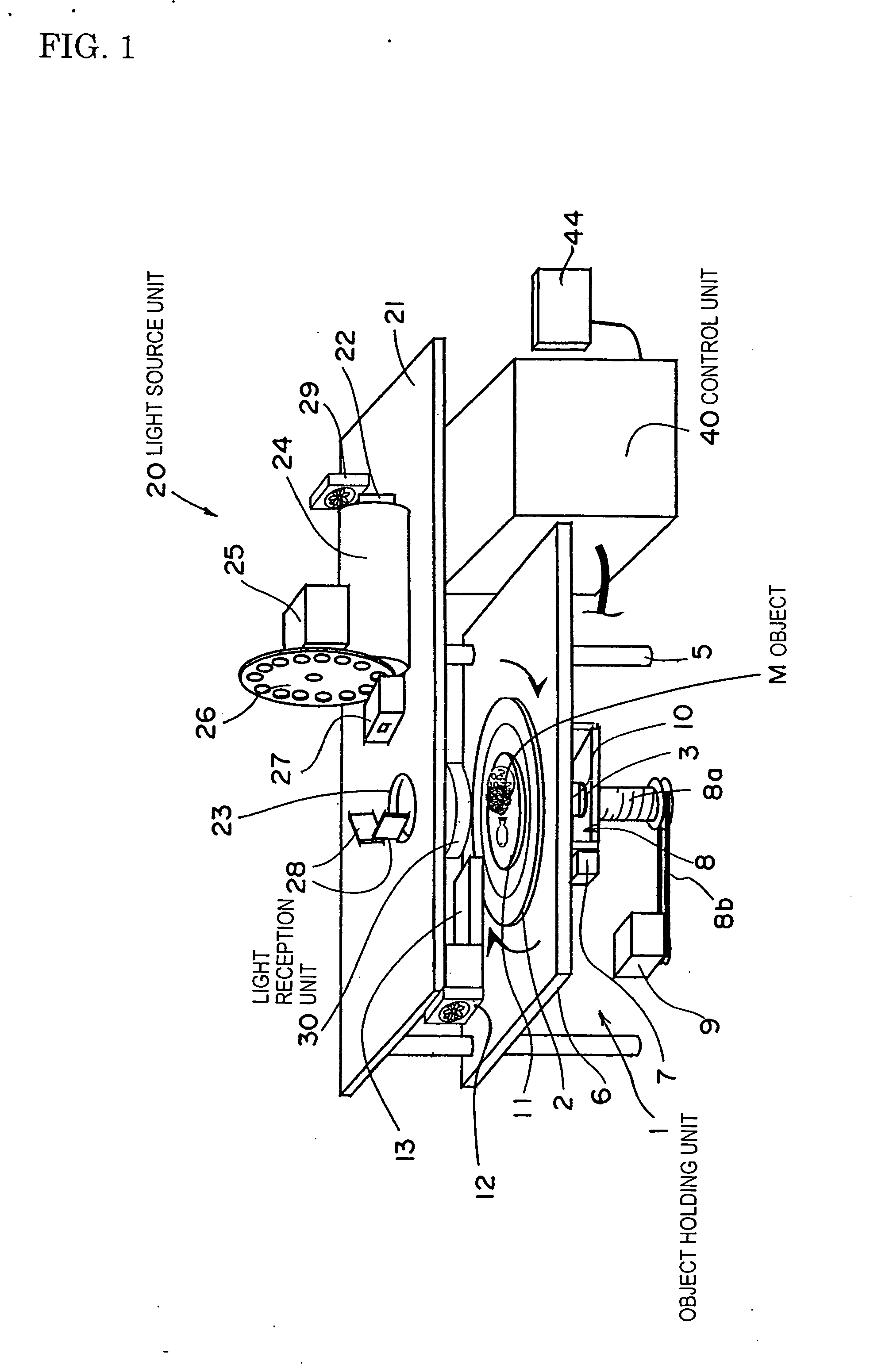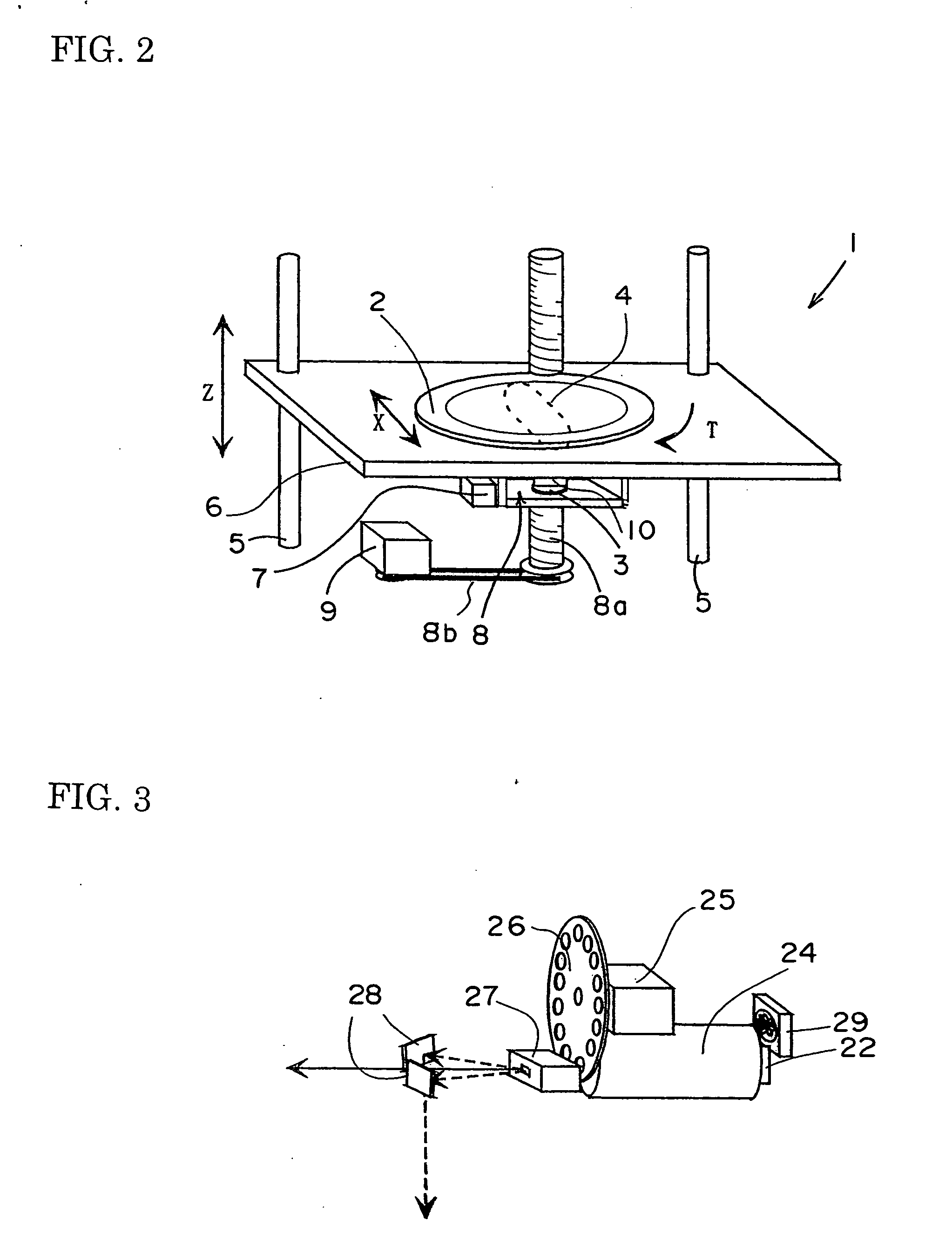Method of Measuring Calorie of Object and Device of Measuring Calorie of Object
- Summary
- Abstract
- Description
- Claims
- Application Information
AI Technical Summary
Benefits of technology
Problems solved by technology
Method used
Image
Examples
experimental example 1
[0185] First, the calorie measurement wavelengths described above were verified to be specific to the calories of the object M. Calculations were performed to obtain correlation coefficients between the calories measured by the wavelengths and respective contents and calorie analysis values of sugar, lipid, and protein obtained by chemical analysis. The results are shown in FIG. 17 (correlations for sugar), FIG. 18 (correlations for lipid), FIG. 19 (correlations for protein), and FIG. 20 (correlations for calorie). The following is known from these results.
[0186] The calorie measurement value using the attribution wavelength according to the present invention was found to have a correlation coefficient of 0.979 with respect to the calorie obtained by chemical analysis (FIG. 20), a correlation coefficient of 0.830 with respect to sugar (FIG. 17), a correlation coefficient of 0.780 with respect to lipid (FIG. 18), and a correlation coefficient of 0.029 with respect to protein (FIG. 1...
experimental example 2
[0187] Experimentation was performed to prove that the respective wavelengths described above are superior attribution wavelengths for measuring the calories and that the calories can be easily, quickly, and accurately measured by the present device (Experimental Examples 2-1 and 2-2). Samples used in the present experimentation are calorie known food items, of which calories are already known through chemical analysis. The samples and their calories obtained by chemical analysis are shown in FIG. 21.
experimental example 2-1
[0188] In the experimentation, two wavelengths were selected. More specifically, the calorie measurement was performed using two wavelengths, namely, a first wavelength (λ1) of 1360 nm and a second wavelength (λ2) of 1722 nm. The correlations between calories measured by the method and device of the present invention and calories obtained by chemical analysis are shown in FIG. 22. For the regression expression, the condition expressed as “C=(366.467)+(−2103.557)·d2A1(λ1) / dλ2+(−1243.905)·d2A2(λ2) / dλ2” was used. The correlation coefficient for the correlation to the known calorie measurement values was 0.976, and the standard error was 34.7.
PUM
 Login to View More
Login to View More Abstract
Description
Claims
Application Information
 Login to View More
Login to View More - R&D
- Intellectual Property
- Life Sciences
- Materials
- Tech Scout
- Unparalleled Data Quality
- Higher Quality Content
- 60% Fewer Hallucinations
Browse by: Latest US Patents, China's latest patents, Technical Efficacy Thesaurus, Application Domain, Technology Topic, Popular Technical Reports.
© 2025 PatSnap. All rights reserved.Legal|Privacy policy|Modern Slavery Act Transparency Statement|Sitemap|About US| Contact US: help@patsnap.com



